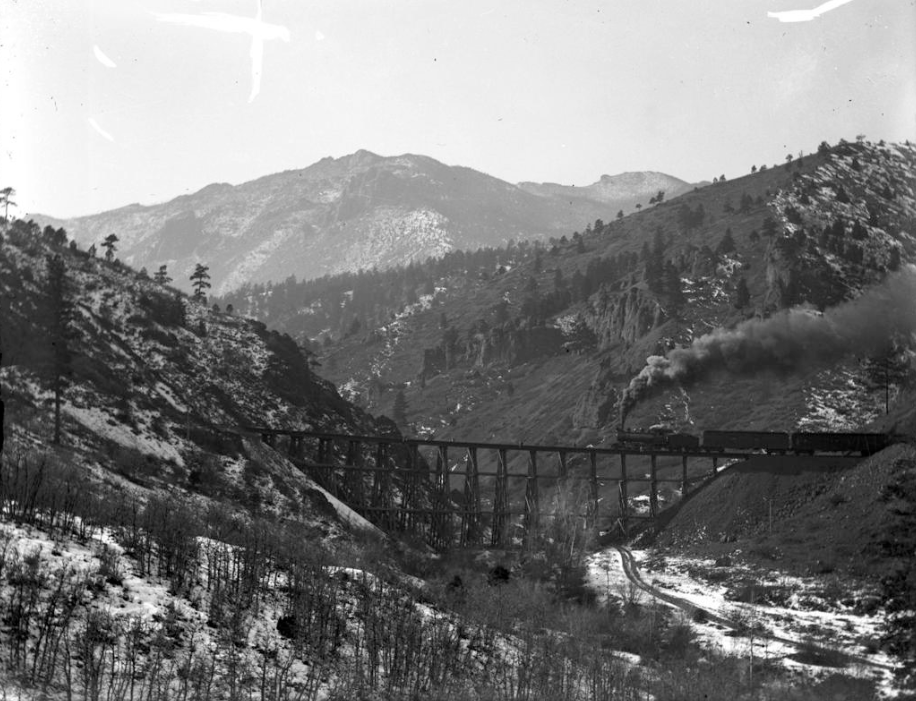Rocky Mountain west gets high grades for passenger train services | Cronin and Loevy

Here are some additional facts and comments about the proposed Front Range passenger rail system planned to run from Pueblo on the south through Colorado Springs and Denver to Fort Collins on the north.
A study was conducted recently of the commuter-style of passenger trains currently in operation in states and metropolitan areas throughout the United States.
The study was conducted by John Friedmann and published in the November 2025 issue of Trains Magazine, a monthly magazine for people interested in the latest developments in the railroad industry.
The study was of “heavy-rail” passenger trains consisting mainly of locomotives and passenger cars. They contrast with “light-rail,” which tends to operate vehicles resembling street cars within cities.
The study found 29 of these “heavy-rail” systems throughout the nation. They ranged from the massive Long Island Railroad to the east of New York City to passenger rail systems so small they were labeled “micro.”
The 29 commuter railroads were broken down by size: Large (6) — more than 20 million annual riders; Medium (6) — 3 million to 10 million annual riders; Small (13) — fewer than 2 million annual riders; and Micro (4) — fewer than 20 trains per day.
These passenger railroads were then given letter grades, ranging from A to F. An A grade meant a commuter railroad was running many trains a day, and those trains were filled with happy riders.
An F grade showed a commuter railroad was running a diminishing number of trains each day, those trains lacked sufficient numbers of riders, and the operation was losing large amounts of money.
The ridership figures were based on data from the National Transit Database operated by the Federal Transit Administration.
Of interest to Coloradans is how, of the six passenger railroads that received an A grade, three were in the Rocky Mountain West.
The three were the Regional Transportation District (RTD) in Denver, the Frontrunner (that goes 83 miles through Provo, Salt Lake City and Ogden in Utah), and the Rail Runner Express (that connects Santa Fe to Albuquerque and then goes further south to Los Lunas and Belen in New Mexico).
The study’s author was enthusiastic about recent developments in the RTD passenger train service in Denver. In 2016, the Denver RTD added heavy-rail to its already existing light-rail system.
The heavy-rail trains consisted of electrified passenger cars running under trolley wires (catenary) on what was often newly laid railroad track. The study noted:
“Now Denver’s commuter rail service is the best utilized and most relevant (ridership as a percentage of local population) of the medium-sized systems.”
The study attributed much of the growth in passenger train service in Denver to the fact a heavy-rail line was built to Denver’s “huge” airport [Denver International Airport or DIA).
DIA is one of the largest and busiest airports on the planet, with direct flights to many major foreign cities. The study lauded the airport trains for being reasonably priced at $10 per trip and for running frequently.
The success of the Denver airport line is an added argument for the current attempt in Colorado to begin operating commuter rail trains along the Front Range from Pueblo through Colorado Springs and Denver to Fort Collins.
The Front Range Passenger Railroad from Pueblo to Fort Collins
will connect to the Denver airport line and the rest of the existing RTD system at Union Station in downtown Denver.

Exactly as the DIA airport line has encouraged the growth of riders on the Denver RTD system, it can be expected to also encourage the growth and the usage of the proposed Front Range line.
This optimistic view of passenger railroad building and successful operations in Colorado contrasts sharply with what is happening with commuter rail in some other cities.
For instance, the MARC (Maryland Area Rail Commuter) between Baltimore and Washington, D.C., lost 64% of its ridership as a result of the COVID pandemic in the early 2020s. It ended up with the worst cost-efficiency among the medium-sized systems and earned a grade of F.
Another big loser is the Metrolink Passenger rail system in Los Angeles. It does not seem to go where the potential riders live. Losing 74% of its ridership to COVID has not helped. Grade F.
FrontRunner in Salt Lake City is only 16 years old, but it leads every other commuter rail system in the country in cost efficiency (operating cost per mile). Grade A.
FrontRunner’s success bodes well for Colorado. Similar to Colorado, 80% or so of the population of Utah lives in a high-population corridor at the foot of a mountain range. If Utah can operate a high-efficiency system in such an environment, the same should be true for Colorado.
Rail Runner Express in New Mexico is a small system, but it has regained 70% of the traffic it lost to COVID in the early 2020s. Many people ride it to avoid having to drive their automobile on to the congested streets of Santa Fe, the historic capital of New Mexico.
Tom Cronin and Bob Loevy write about Colorado and national politics.












